Arcrunner Review
ArcRunner is a roguelike over the shoulder third-person shooter set in a Cyberpunk universe, developed by Trickjump Games Ltd and published by PQube. It works well with Proton, on both PC and Deck.
[VIDEO PLACEHOLDER]
An AI went rogue, now it is up to you, and maybe 2 more friends, the task to reset it. Upload your memory into one of 3 styles of bodies available, and adventure through multiple levels, fighting a different set of enemies while trying to reach the core of the system. There is a huge chance you will not get there on the first try, but as you fight hordes and more hordes of enemies you will unlock weapons for your next start and receive nanites, currency that allows you to improve your character for your next run.

| Element | Description (spoiler free) |
|---|---|
| Objectives | Reset a Rogue AI |
| Challenges |
|
| Mechanics |
|
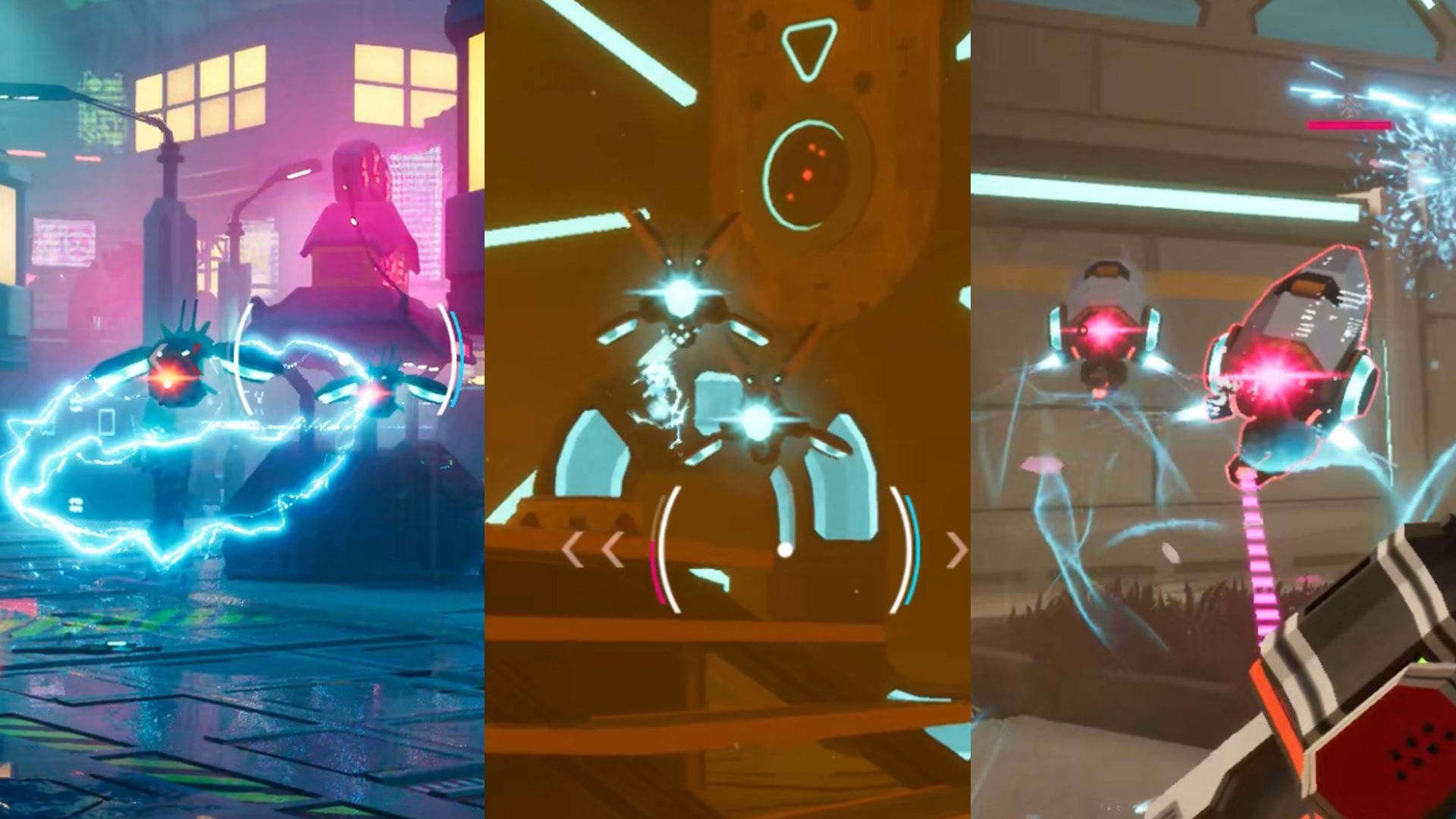
The low poly neon art style sets the mood of the game, divided into 5 worlds with unique aesthetics and level design, each world has its own selection of enemies to overcome. While the bread and butter of the hordes look like reskinned entities from previous worlds they come with a different set of attacks, and they also introduce new members to their rooster of assailants, making you rethink your strategies a bit.
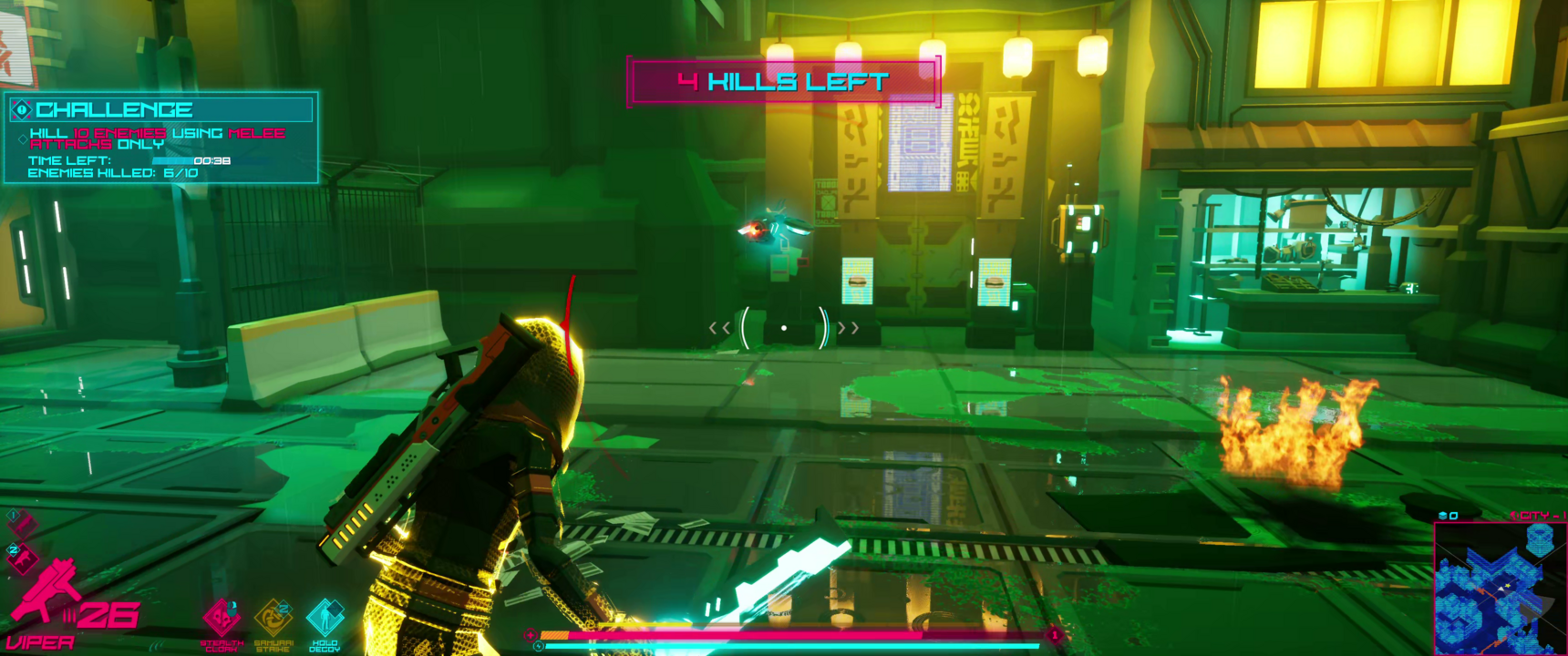
Each world is subdivided into levels, and each level is composed of a few “arenas”, and maybe with a chest challenge arena. As you enter the arena, it will prevent you from leaving and it will start spawning enemies. To progress, you will need to kill all enemies, a required number of enemies, or survive for a determined time. The chest challenge is similar, but with some requirements, like killing enemies while airborne, executing a number of multikill or just not taking damage for a number of seconds, and rewards you with better options than the regular chests.
Be careful of the deadly environment hazards, probably what killed me most in this game. There are lasers that consume a huge chunk of your life if you cross them, or objects that explode quickly after you melee them once, leaving little time for you to escape.
As you progress the levels, the difficulty increases steeply, the enemies become spongier tanking more bullets or making your hacks take longer to set in, making mandatory the grinding to improve your character next run.

As roguelike progression goes, this game is on the annoying side. Do you want to use skills from your character? Unlock with nanites on the next run. Would you like to have mods on your weapons or carry a secondary? Nanites on the next run. Would it be nice to kill a single enemy without having to reload your weapon a few times, right? Nanites + next run.
The carry over progression you can use at every run, is a must to finish the game, they improve your damage output or character survivability. By the time you have enough stats to fight in world 2, the world 1 that once was fun and challenging is now just a chore you need to go through quite overpowered for it. Also, if you find a weapon you like and kill the required number of enemies with it, it will then be available at the start of your next run.
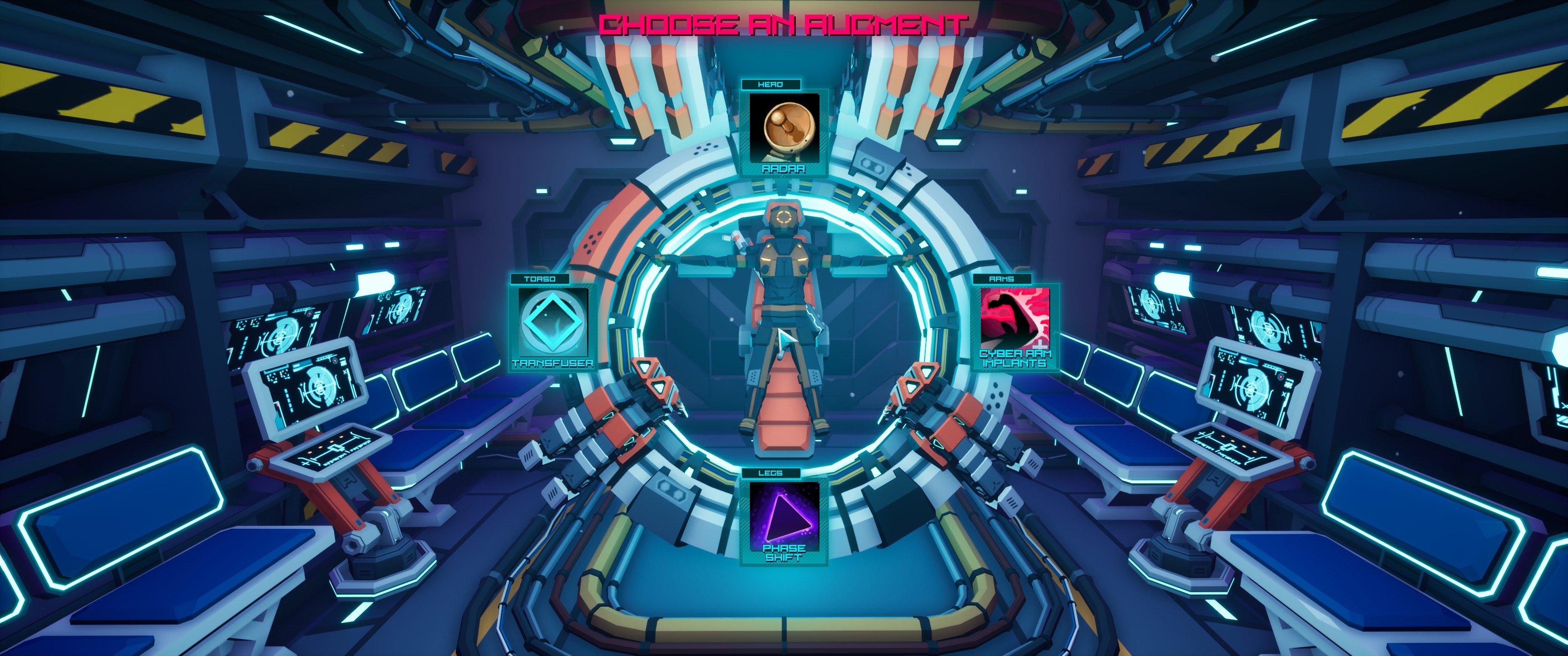
The temporary progression lasts only during that run, and can allow you new fighting tactics, but are not enough to make you progress further in the game by themselves. Those are enemies drops or chest contents: weapons, weapons mod, gadgets, health or shield recovery and nanites, you can also find those in chests and challenge chests. Lastly, at the end of each level you can select an augmentation that is quite useful, they can give you an extra jump, recover part of your shield after each level, increase your damage and many others. Some of them lack in detailing, like the Hacker “hacks” skills, it only says hack level 1, 2, 3…
There are 3 available bodies to upload your memory, aka characters to play:
- The Soldier, a character with a defensive skill set, felt quite useless as you cannot shoot while using the shield, and the melee is slow
- The Ninja is a hit-and-run type, more well-rounded and with the possibility to become invisible to your enemies
- Lastly, the Hacker, you have a set of hacks to hit enemies or level hazards, like spreading a virus or converting a creature to your side temporarily, you unlock it by finishing the 3rd world after a lot of grind

I felt as the Hacker didn’t have the same amount of testing as the others. Their augmentations lack detailing, they fell short as the game goes, and it kept getting stuck while you move in the level because it floats.
As you can play this game with up to 3 players, those bodies made more sense when part of a team, and the game became more enjoyable when I played with friends.
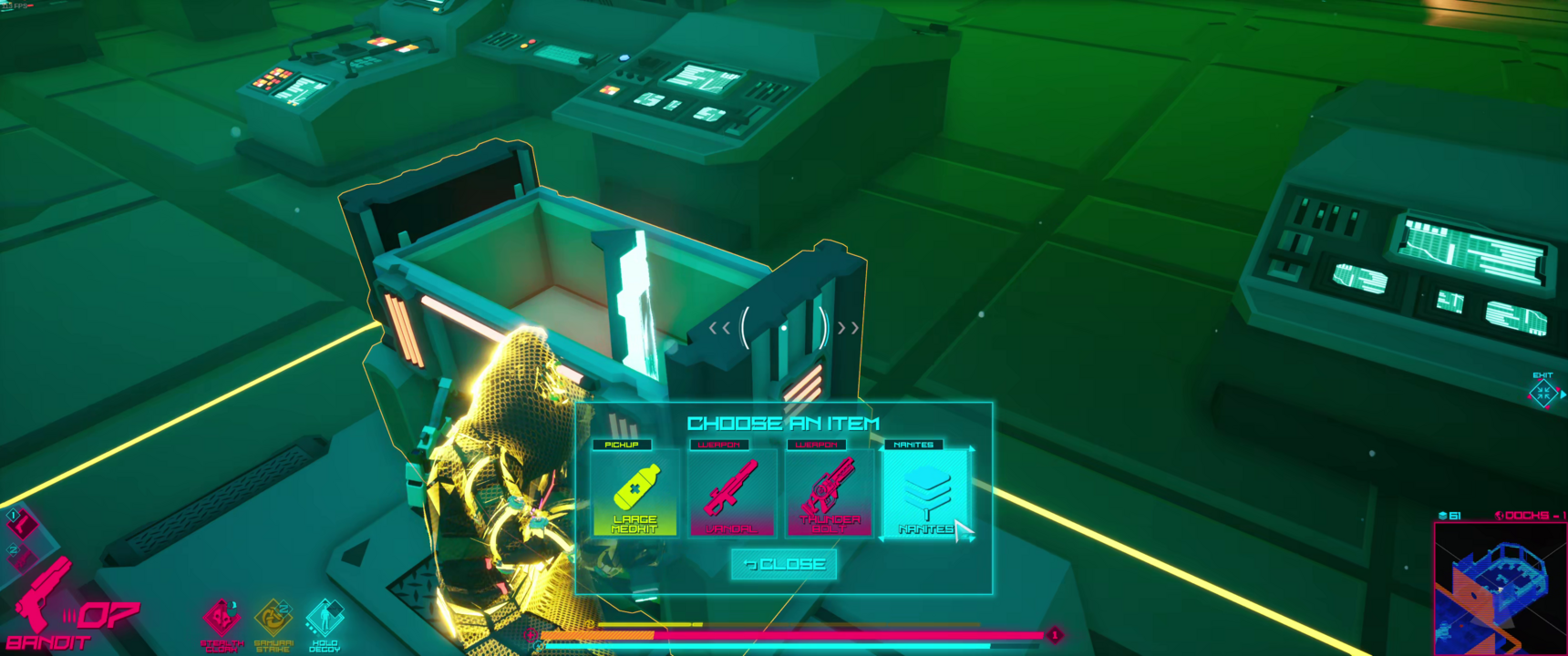
ArcRunner has interesting skills and multiple weapons and gadgets to suit several play styles. The game leads you well without taking you by the hand, letting you learn by yourself with gameplay while you progress. The problems are that soon you will notice that most play styles are useless, and that it will be faster to kill yourself, spend your nanites and ran all worlds again than spending excessively much time to clean an arena because of spongier robots.
The roguelike mechanics felt quite shoehorned there, in what otherwise would be a good game, it did not feel different from RPG games that make you repeat the tasks in the same area again and again to progress a bit way past the point you start hating doing that. Progression was not a matter of skills, team play or lucky, it was a matter of getting countless nanites.
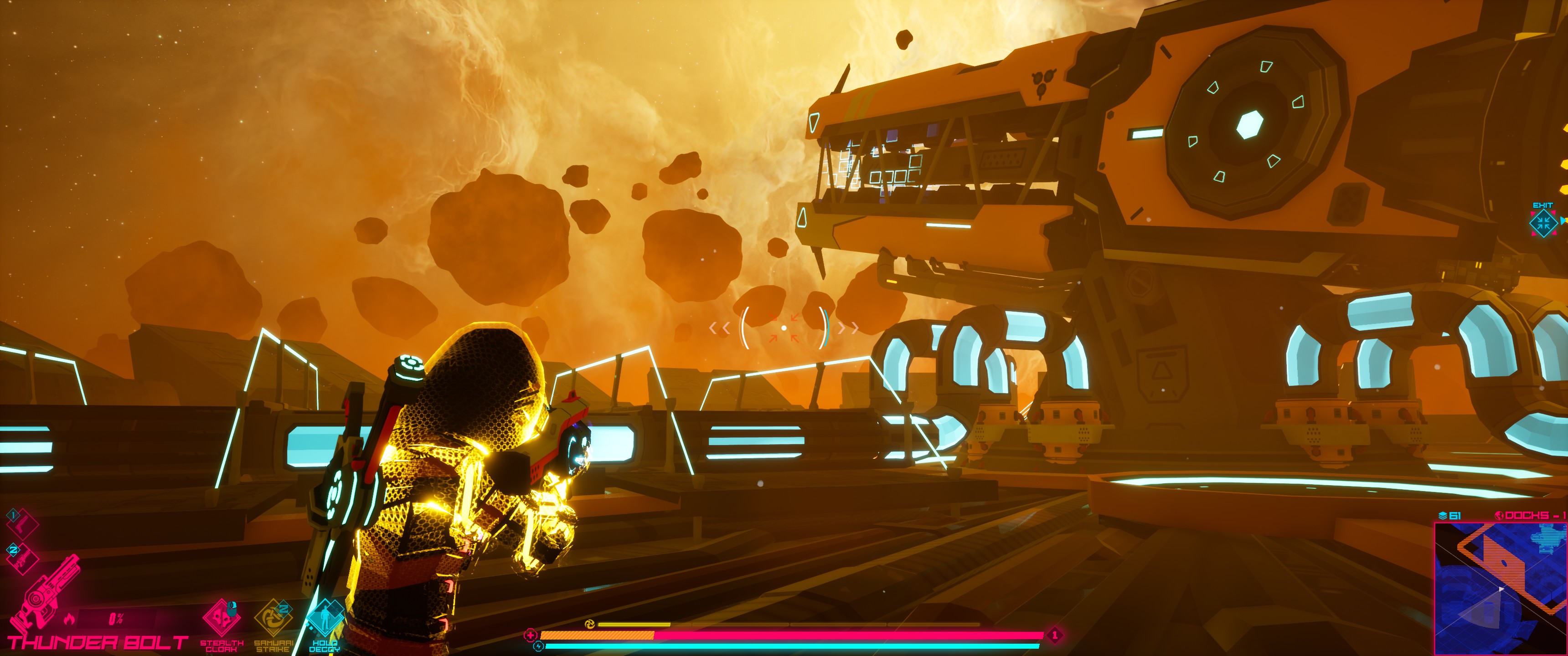
ArcRunner has some qualities of life I enjoyed:
- Information you need, like the energy, ammo and number of dashes are represented close to the aim reticle
- You can stop the game at any time, and when you come back you will start after the last arena you completed, instead of having to restart the whole run or a level
- The hit detection was local, so when I played with friends from far away, we did not have to deal with latency problems
- I could tweak the controls to my taste, like changing the dash and jump button, as I used the first more frequently

Steam Deck Power Draw and FPS averages
| Graphics Preset | FPS | Power Draw (W) |
|---|---|---|
| Ultra | 30 | 25 |
| High | 51 | 20 |
| Medium | 57 | 18 |
| Low | 60 | 15 |
The bulk of this review was done on a Linux PC with a mouse and keyboard, as I have a hard time using controllers to aim. However, I spent some time on Deck and here are some suggestions:
- Create a control setting to better use the trackpad aim, and set the click to enable gyro, it helps to fine tune into your target. The original click uses emote, and I was constantly emoting while getting shot at.
- I found a good balance of FPS and power draw by setting the graphics to the medium preset, then disabling the antialiasing options. That will give you some freedom to bump up other elements you find important. Because of the small arenas, you might find that drawing distance will benefit you less.
The devs are active on the Steam Discussion section discussing improvements and game roadmap. So, I expect to see some tweaks during the next couple of months. So far, the devs put out a couple of patches that fix bugs and buff weapons and gadgets giving you some more chance with different play style.
The game offers a Demo, so I recommend you to play it if you are interested. The full version is also available on Steam, and it played well on both my Linux and Steam Deck.
Thank you for reading and be excellent to each other.
Cheers, Nils
